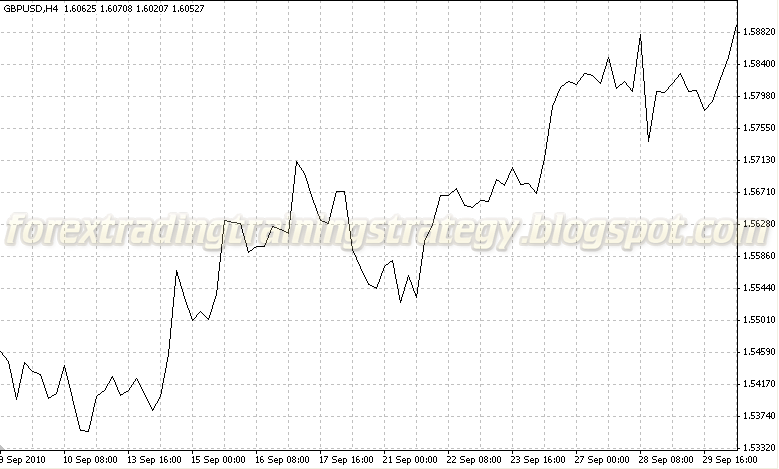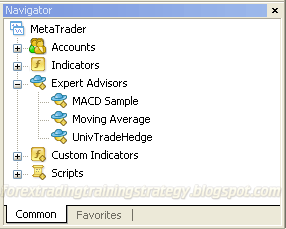On every Forex website that you visit you will notice that they provide warning about the trading the FX market where it involves a high risks of losing your entire investment or capital.
I have been hearing on various forums that some newbie traders had even instantly lost their entire account balance on just a few trades.
Anyway, there are several ways on how to prevent such horrible situation from happening where managing your margin correctly is just one of them.
The margin serves as a protection to prevent further losses from occurring especially when the market has decided to go against your speculation.
The margin serves as a protection to prevent further losses from occurring especially when the market has decided to go against your speculation.
All FX Brokers has now the management capabilities that automatically implements margin on your account.
It works automatically by closing all opened positions when your available balance had fallen below the required marginal level.
This function will also prevent your account balance from falling into a negative amount no matter how volatile is the market condition.
Most Forex Brokers requires a minimum of 1% margin to maintain an open trade but just to make sure, it’s always best to contact your Technical Support to provide further details.
We will be using the 1% percent margin requirement on this example:
Opening a BUY or LONG position will require a margin calculated below:
Some Brokers might round-off the value into a worth of $1,700 margin for GBP pairs.

Most Forex Brokers requires a minimum of 1% margin to maintain an open trade but just to make sure, it’s always best to contact your Technical Support to provide further details.
We will be using the 1% percent margin requirement on this example:
Currency Pair: GBP/USD
Rate: 1.6332/1.6337
Type of Account: 100 000/Lot
1% Leverage: 100 000 X 0.01 (1%) = 1000 Units
Opening a BUY or LONG position will require a margin calculated below:
Formula: Currency Pair X Leverage = Margin Per Lot
1.6337 X 1000 = USD 1633/Lot
Some Brokers might round-off the value into a worth of $1,700 margin for GBP pairs.

What is Margin Level?
Margin level is the ratio of your account equity to the margin required for any open positions.
It's calculated as follows:
Margin Level = (Account Equity / Used Margin) x 100
Account equity is the value of your account after any profits or losses from closed trades have been added or subtracted.
Used margin is the amount of money that is currently being held by your broker to cover any open positions.
The margin required for each trade depends on the size of the trade, the currency pair being traded, and the leverage being used.
For example, let's say you have a $10,000 trading account and you open a position with a margin requirement of $1,000.
Your margin level would be calculated as follows:
Margin Level = ($10,000 / $1,000) x 100 = 1,000%
This means that you have 10 times more equity than the margin required for the open position.
A margin level of 100% means that your equity is equal to your used margin, while a margin level of less than 100% means that your equity is less than your used margin.
The Risks of High Margin Levels
Having a high margin level might seem like a good thing, as it means you have a lot of equity to cover your open positions.
However, it also means that you're using a lot of leverage, which can be risky. Here are some of the risks associated with high margin levels:
1. Margin Calls
If your margin level falls below a certain level, your broker will issue a margin call. This means that you'll be required to deposit more funds into your account to cover the open positions.
If you're unable to do so, your broker may close out your positions, potentially resulting in significant losses.
For example, let's say you have a $10,000 trading account and you open a position with a margin requirement of $1,000.
If the position goes against you and your equity falls to $1,000, your margin level would be calculated as follows:
Margin Level = ($1,000 / $1,000) x 100 = 100%
At this point, you're at risk of receiving a margin call. If the position continues to move against you and your equity falls below $1,000, your margin level will be less than 100%, and your broker may close out your position to protect themselves.
2. Losses
Using high leverage increases your potential profits, but it also increases your potential losses. If a trade goes against you, your losses will be magnified by the leverage you're using.
This can result in significant losses if you're not careful.
For example, let's say you have a $10,000 trading account and you open a position with a margin requirement of $1,000 and a leverage of 10:1.
If the position goes against you by 100 pips, you'll have lost $1,000, or 10% of your account. If the position goes against you by 200 pips, you'll have lost $2,000 or 20% of your account.
This shows how using high leverage can quickly lead to large losses.
3. Emotions
Trading with high leverage can also lead to emotional trading. When you have a lot of money at risk, it's natural to feel anxious or nervous.
This can lead to making impulsive decisions, such as closing out a trade too early or holding onto a losing trade for too long.
Emotional trading can be very dangerous, as it can lead to making poor decisions that can result in significant losses.
Tips for Managing Your Margin Level
Now that we've discussed the risks associated with high margin levels, let's look at some tips for managing your margin level effectively:
1. Use Stop-Loss Orders
A stop-loss order is an order placed with your broker to automatically close out a position if it reaches a certain price level.
This can help to limit your potential losses and protect your account from margin calls. When placing a stop-loss order, it's important to choose a level that's both realistic and provides adequate protection.
2. Set Realistic Trading Goals
Setting realistic trading goals is an important part of managing your margin level. It's important to have a plan in place for each trade, including a target profit level and a stop-loss level.
By setting realistic goals, you can avoid taking on too much risk and potentially blowing out your account.
3. Use Proper Position Sizing
Proper position sizing is crucial for managing your margin level. It's important to only risk a small percentage of your account on each trade, typically no more than 1-2%.
This helps to limit your potential losses and ensures that you have enough margin available for future trades.
4. Monitor Your Margin Level Regularly
Monitoring your margin level regularly is essential for avoiding margin calls and maintaining a healthy trading account.
It's important to keep track of your account equity, used margin, and margin level at all times.
This can help you to avoid taking on too much risk and ensure that you have enough margin available for future trades.
5. Use Lower Leverage
Using lower leverage can help to reduce your risk and prevent margin calls. While higher leverage can increase your potential profits, it also increases your potential losses. By using lower leverage, you can reduce your risk and potentially avoid margin calls altogether.
Final Words
Managing your margin level is an essential part of Forex trading.
By understanding what margin level is, the risks associated with high margin levels, and strategies for managing your margin level effectively, you can improve your trading performance and avoid potentially catastrophic losses.
Remember to use stop-loss orders, set realistic trading goals, use proper position sizing, monitor your margin level regularly, and use lower leverage to reduce your risk.
By following these tips, you can trade Forex with confidence and achieve your financial goals.









